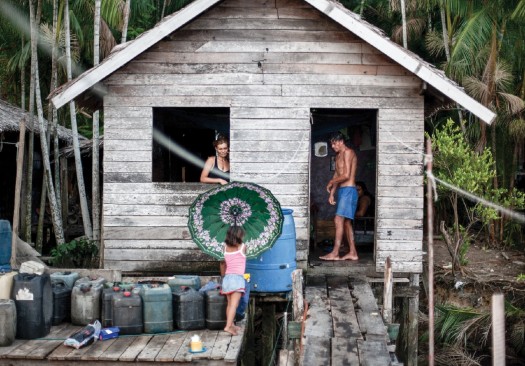
Bartering Sex for Modernity on the Amazon

The small village of São Francisco da Jararaca, located on the island of Marajó, on the Amazonian Delta
Our Fall 2012 issue offers a photo feature on the river women of Brazil by Nadia Shira Cohen. In the small town of Jararaca on the Amazon, the biggest prize for villagers is diesel oil, which crews trade for money, food, and more recently, time alone with young girls who have little other opportunity than to offer their bodies in exchange for it.
Cohen writes:
Exchanging sex for food, money, and now diesel is something of a dark pastime of the region. “In the 1940s, when logging came to be the principal economy of some Amazon regions, especially in the rainforest, the presence of foreign ships intensified the old practice of the seduction of adolescent girls,” says Professor Agenor Sarraf Pacheco, a social historian at the Pontifical Catholic University of São Paulo. “Many times the girls are conscious of the dangers that their immersion in that world can bring. Others are encouraged by their mothers, aunts, or sisters with more experience, showing them that this world can offer them a better life.”
Although practiced in public silence, the culture of sexual exchange in the Amazon has become somewhat culturally accepted, with many families of up to three generations of women “doing the program,” as it is commonly called.
And yet “prostitution” isn’t exactly the right term for what goes on here. For the more experienced women of the cargo ships, their sexual encounters have become more like love stories, filled with gifts of perfume, sometimes televisions, and, most importantly, the promise of a better life—a way to escape the depressing reality of the ribeirinha.

